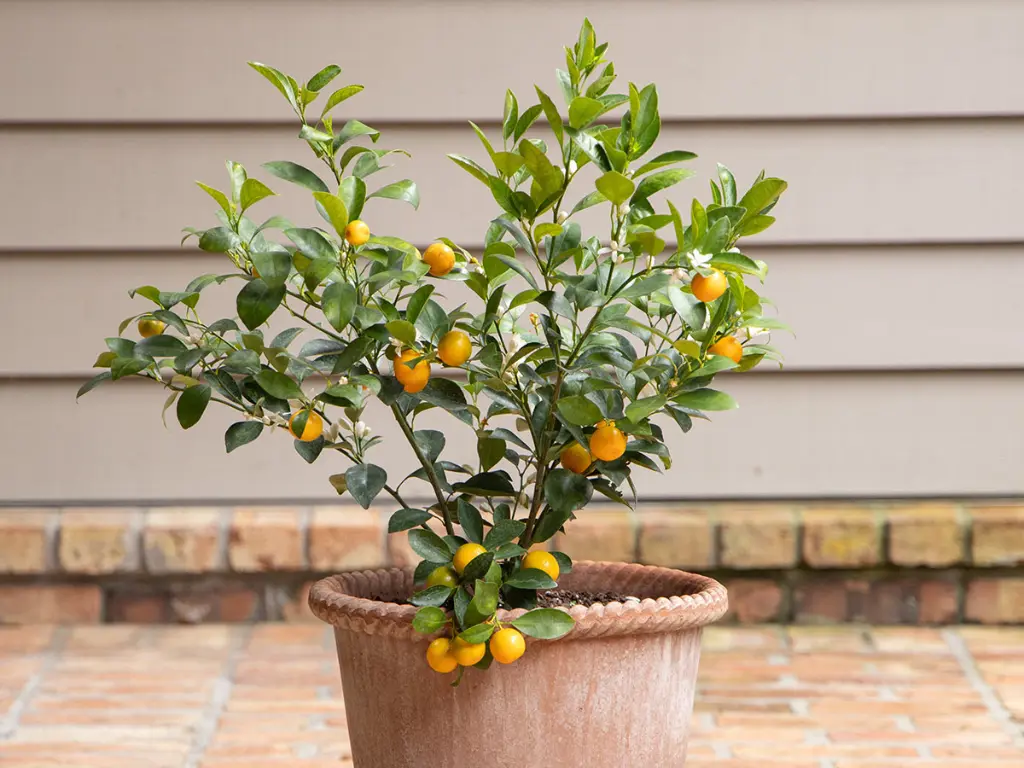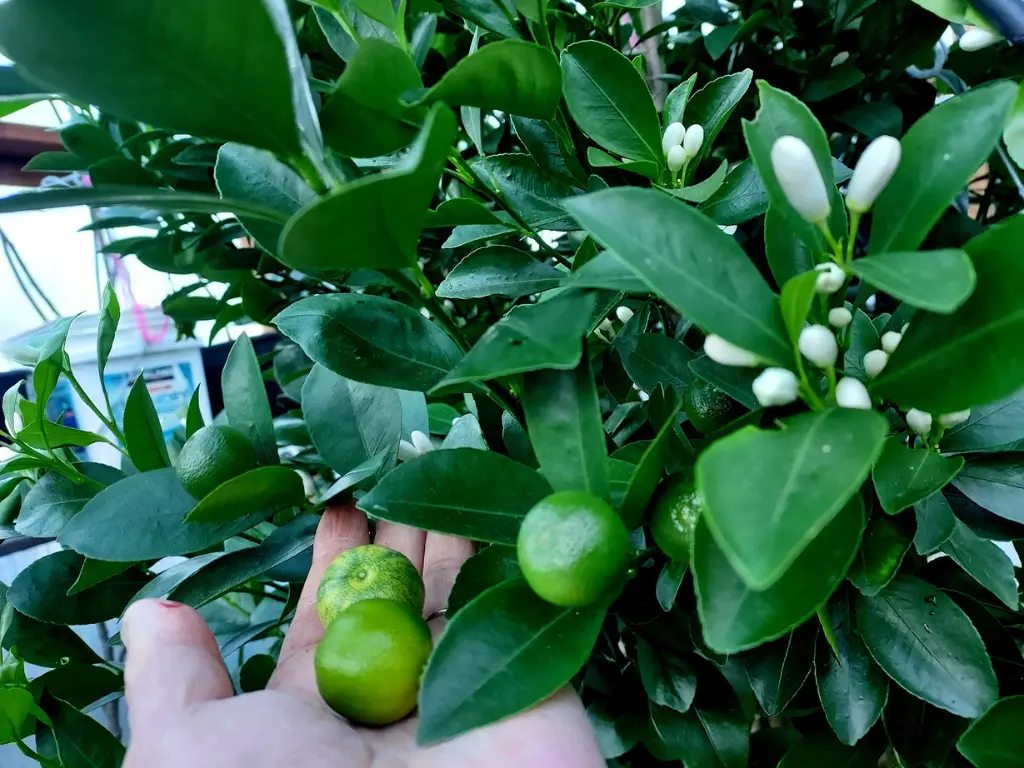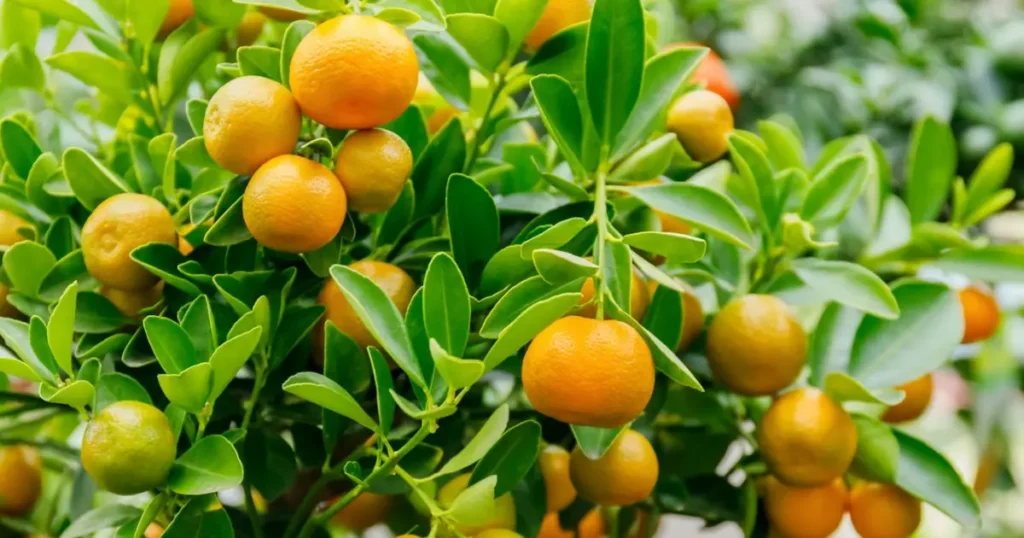Guides
Ultimate Summer Care for Calamondin Tree
Calamondin trees, with their vibrant, tangy fruits and fragrant leaves, can be a bit tricky to care for in the summer. Do you want your Calamondin tree to thrive during the hot summer months? You’re not alone! Many gardeners often face challenges in maintaining their citrus plants during the summer heat. But don’t worry — I’m here to walk you through everything you need to know to keep your tree healthy and productive during this season.
In this guide, I’ll cover summer care for Calamondin tree, including watering, sunlight, humidity, fertilization, and common problems you may encounter.
Understanding Your Calamondin Tree’s Needs

Before diving into specific care tips, it’s important to understand your Calamondin tree’s basic needs. This tiny citrus tree, often referred to as the Citrus Mitis or “Calamondin orange,” is a hybrid of the mandarin orange and the kumquat. It thrives in warm, sunny conditions, making it a perfect addition to your garden or indoor plant collection.
Optimal Sunlight Exposure: Calamondin trees need plenty of light to grow and produce fruit. Ideally, your tree should receive full sunlight for at least 8 hours a day. If you’re growing your Calamondin indoors, place it near a south or west-facing window to ensure it gets the sunlight it needs. Outdoors, a sunny spot in your garden or patio will work wonders.
Ideal Soil Conditions: The best soil for Calamondin trees is well-draining, slightly acidic, and rich in organic matter. A citrus-specific potting mix or a mix designed for acidic-loving plants will help your tree thrive. If you’re growing your tree in a container, make sure the pot has proper drainage holes to prevent waterlogged roots.
For a detailed guide on how to successfully grow Calamondin indoors, check out our complete guide on growing Calamondin indoors.
Summer Care for Calamondin Tree

Here’s what you need to know:
1. Watering Guidelines
One of the most common questions I get asked is: “How often should I water my Calamondin tree in the summer?” The answer depends on the weather and your tree’s environment. As a general rule, water the tree when the top 2–3 inches of soil feel dry to the touch.
During hot summer months, Calamondin trees will require more frequent watering, but make sure not to overwater them. Too much water can lead to root rot. If you’re growing your tree in a pot, ensure that it has good drainage to prevent excess water from accumulating at the bottom.
2. Fertilization Tips
Fertilizing your Calamondin tree helps it grow strong and produce more fruit. In summer, it’s best to feed your tree every 4-6 weeks using a balanced fertilizer with micronutrients, such as fish emulsion or a citrus-specific fertilizer. These fertilizers promote healthy growth and help support fruit production.
Avoid using high-nitrogen fertilizers, as they can encourage too much foliage growth at the expense of fruit development. A balanced fertilizer will help maintain the right balance of nutrients for optimal growth.
3. Humidity and Temperature Management
Calamondin trees are sensitive to extreme temperatures and humidity. In the summer, high temperatures can lead to stress for your tree, causing issues like leaf drop or stunted growth. If you’re growing your tree indoors, aim for a humidity level of around 50-60%. This can be achieved by placing a humidity tray under the pot or using a room humidifier.
If you’re growing your tree outdoors, ensure it’s not exposed to sudden temperature fluctuations. Calamondin trees prefer temperatures between 70°F and 85°F. If the temperature exceeds 90°F for prolonged periods, it can cause the tree to suffer, especially if it’s not adequately watered.
Common Issues and Solutions for Calamondin Trees
Even with the best care, your Calamondin tree may encounter a few problems. Here’s how to deal with the most common issues:
1. Dealing with Pests
Calamondin trees can attract pests like aphids, mealybugs, and scale insects. If you notice sticky residue on the leaves or small pests on the branches, it’s time to take action. You can remove pests manually or treat your tree with an organic insecticidal soap or neem oil.
Regularly inspect your tree for signs of pests, especially during the summer when insect activity is at its peak. The sooner you catch the problem, the easier it is to manage.
2. Preventing Leaf Drop
Leaf drop is a common issue for Calamondin trees in the summer. This can happen due to inconsistent watering, extreme temperatures, or nutrient deficiencies. To prevent leaf drop, make sure you’re watering your tree regularly but not over-saturating the soil. Also, ensure that your tree gets enough nutrients by using the right fertilizer.
If your tree is grown indoors, place it in a location where it gets consistent sunlight and is shielded from drafts or sudden temperature changes. Outdoor trees should be placed in a location where they’re protected from excessive heat or wind.
3. Managing Fruit Production
While Calamondin trees are known for their abundant fruit, not all trees will produce fruit in the summer. If your tree isn’t producing fruit, consider pruning it during the early summer months to remove any dead or overcrowded branches. This will help the tree focus its energy on producing fruit instead of maintaining excess growth.
To learn more about the most common problems and how to troubleshoot them, read our article on common problems in Calamondin trees.
Conclusion
Summer care for your Calamondin tree can seem like a lot, but with the right knowledge and attention, your tree will thrive and reward you with beautiful, tangy fruit. Remember to provide plenty of sunlight, water when needed, and ensure the right balance of nutrients and humidity.
By following the tips shared in this guide, you’ll be well on your way to enjoying a healthy and productive Calamondin tree. If you’re new to growing citrus or just want to learn more about tree care, make sure to check out other helpful articles on our blog. Happy gardening!
Frequently Asked Questions (FAQs)
1. How often should I water my Calamondin tree in summer?
Water when the top 2–3 inches of soil feels dry. You may need to water it more frequently during hot weather but ensure proper drainage to prevent root rot.
2. Can I move my Calamondin tree outdoors during summer?
Yes! Calamondin trees thrive in outdoor conditions with plenty of sunlight, but make sure to gradually acclimate the tree to prevent shock.
3. What type of fertilizer is best for Calamondin trees?
Use a balanced fertilizer with micronutrients, specifically designed for citrus trees. Avoid using high-nitrogen fertilizers, as they can lead to excessive foliage growth.
4. How can I increase humidity for my Calamondin tree indoors?
You can increase humidity by placing a humidity tray under the pot or using a room humidifier to maintain optimal humidity levels for your tree.
With the right care, your Calamondin tree can thrive in the summer and beyond. Happy gardening, and I hope these tips help you achieve the vibrant, fruitful tree you’ve been dreaming of!


7 Vegetables to Plant in December for a Bountiful Winter Harvest
Winter gardening is a challenge many new gardeners shy away from. But if you’re among [...]
Dec
9 Common Christmas Cactus Problems and How to Fix Them
Have you ever walked past your Christmas cactus and wondered why it suddenly looks sad? [...]
Nov
Swedish Ivy Care: How to Grow a Healthy, Thriving Plant
Have you ever looked at your Swedish Ivy and wondered why the leaves are turning [...]
Nov
Avoid These 10 Garlic Planting Mistakes for Bigger, Healthier Bulbs
Growing garlic at home is one of the most satisfying things a gardener can do [...]
Nov
How to Prevent Christmas Cactus Bud Drop: Tips for a Healthy Bloom
Have you ever noticed your beautiful Christmas cactus (Schlumbergera) starting to lose its buds just [...]
Nov
Discover 7 Stunning Types of Night-Blooming Cereus
Have you ever waited for a flower that only opens at night and then disappears [...]
Nov